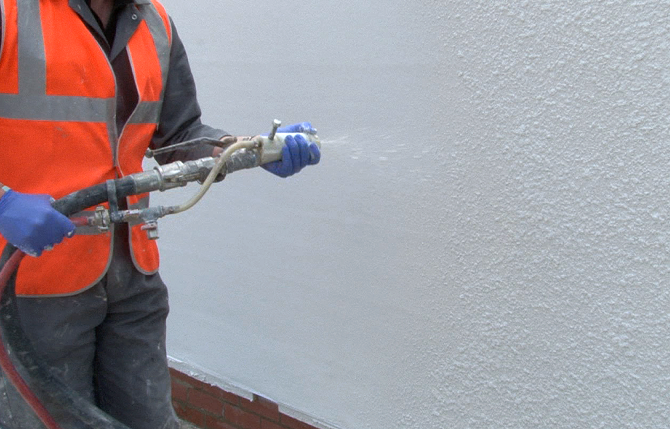Rendering In Colder Months: Here’s What You Need To Know
If you’re a contractor or applicator, you might dread working outdoors over the autumn and winter months. Aside from the cold being unpleasant, it can cause lots of issues for construction workers, particularly if you’re working with render.
Work can’t stop just because it’s cold out, so how can you avoid these potential pitfalls when you are working in unfavourable conditions? We’ve got some tips to help.
1. Know your renders
your renders
The weberpral M monocouche is a suitable solution for application in temperatures down to 5°C.
2. Protect the substrate
If the elevation is exposed to rain and allowed to become saturated, it will be at risk of a greater amount of movement due to drying shrinkage than an elevation which has been adequately protected. This movement means there’s a greater risk of cracking within the substrate, which could lead to cracking in the render. Protecting the elevation from the weather by tenting the scaffolding will protect the substrate.
3. Consider an accelerator
When using weberpral M, use weber accelerateur monocouche, which is a liquid additive used in place of a portion of the gauging water at the mixing stage. While it’s not an anti-freeze, this product will speed up the initial set time. If dosed correctly, a 20°C degree scrape time can be achieved at 5°C. This leaves the render less susceptible to lime bloom.
4. Beware of frost
Frost and render don’t mix. Never work with frosted materials, on frosted substrates or apply below the recommended temperature listed on a product’s datasheet. Take note of expected weather, and don’t apply if low temperatures are expected during the drying or curing period. In frosty conditions, work should only proceed where suitable protection is provided, by enclosing the scaffolding and the temperature is raised with the use of heaters.
5. Protect the finish
Newly applied renders must be protected from damage. Artificial enclosures around scaffolding may be formed using tarpaulins, close mesh netting, polythene or other suitable material to overcome adverse weather conditions.